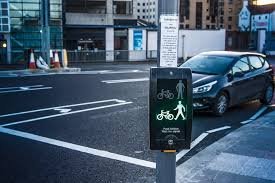Puffin crossings are a modern type of pedestrian crossing used widely in the UK and other parts of the world. Understanding the signal sequence at these crossings is essential for both drivers and pedestrians to ensure road safety. A commonly asked question is: Which colour follows the green signal at a puffin crossing? In this article, we’ll explore the answer in detail, along with how puffin crossings work and what makes them different from traditional pedestrian crossings.
What Is a Puffin Crossing?
A puffin crossing (Pedestrian User-Friendly Intelligent crossing) is a type of pedestrian crossing equipped with smart technology. Unlike traditional zebra or pelican crossings, puffin crossings use sensors to detect pedestrian movement on the crossing itself and on the pavement waiting area.
These crossings help manage traffic flow better and provide a safer crossing experience for pedestrians by ensuring the signal stays red for vehicles only as long as pedestrians are crossing.
Signal Sequence at a Puffin Crossing
To understand which colour follows the green signal, it’s important to look at the signal sequence for vehicular traffic at a puffin crossing. Here’s how it typically progresses:
- Green Signal – Vehicles may go.
- Steady Amber (Yellow) Signal – This warns drivers that the signal is about to turn red.
- Red Signal – Vehicles must stop.
- Red Signal Continues – Until sensors detect that all pedestrians have safely crossed.
- Back to Green Signal – Once pedestrians have crossed and it’s safe for traffic to resume.
So, the colour that follows green at a puffin crossing is AMBER (yellow).
How the Amber Signal Works at a Puffin Crossing
After the green light, the amber signal acts as a transitional phase. It warns drivers to prepare to stop. Unlike some older pedestrian crossings, puffin crossings do not have a flashing amber phase.
At puffin crossings:
- Amber is steady, not flashing.
- Vehicles must stop unless they are too close to stop safely when the amber light appears.
Why the Sequence Matters for Road Safety
Knowing the correct order of signals at a puffin crossing is vital because:
- It helps prevent accidents.
- It ensures smooth traffic flow.
- It allows pedestrians more time to cross if needed.
Because puffin crossings use sensors, the red phase may last longer if pedestrians are slow, ensuring safety.
How Puffin Crossings Differ from Pelican Crossings
While both crossings allow pedestrians to cross roads, their signal systems differ.
| Feature | Puffin Crossing | Pelican Crossing |
| Sensor Technology | Yes (on pavement & crossing) | No (timed sequence) |
| Flashing Amber Signal | No | Yes |
| Pedestrian Lights | Positioned beside the user | Positioned on opposite side |
| Traffic Management | More efficient due to real-time data | Fixed timing |
This comparison shows why puffin crossings are considered safer and more efficient.
Understanding the Pedestrian Side of the Signal
For pedestrians at a puffin crossing:
- Red person = Do not cross
- Green person = Safe to cross
There’s no flashing green man like on pelican crossings. The signal will stay green until sensors detect the pedestrian has safely crossed.
Benefits of Puffin Crossings
Puffin crossings are designed with both safety and efficiency in mind. Here are their key benefits:
- Improved pedestrian safety through sensors
- Reduced traffic delays
- No confusion with flashing amber phases
- Support for elderly or disabled pedestrians
Common Mistakes Made by Drivers
Despite clear signals, many drivers make avoidable errors. Here are some to avoid:
- Speeding through amber lights – Amber means stop, not speed up.
- Ignoring red lights – Even if no pedestrians are seen, sensors may still detect them.
- Blocking the crossing – Always stop behind the stop line.
Avoiding these mistakes ensures a safer road for all users.
Puffin Crossings and the Highway Code
The UK Highway Code provides guidance on how to respond to puffin crossings:
- Obey the amber and red lights strictly.
- Watch for pedestrians who may cross slowly.
- Respect the crossing even if no one is visible – sensors might detect otherwise.
Future of Pedestrian Crossings
Puffin crossings represent the future of pedestrian infrastructure. With advancements in AI and sensor integration, these crossings may become even more adaptive:
- Integration with mobile apps for visually impaired users
- Real-time traffic data analytics
- Longer crossing times during adverse weather
Innovation continues to enhance pedestrian and traffic safety.
Read More: OnlyFans Unlock – Exploring Access, Ethics, and Evolving Digital Boundaries
Conclusion
So, which colour follows the green signal at a puffin crossing? The answer is amber. The sequence—green to amber to red—helps ensure traffic and pedestrian movement is managed intelligently and safely. Puffin crossings have revolutionised road safety by eliminating the flashing amber phase and replacing it with smarter, sensor-based operations.







